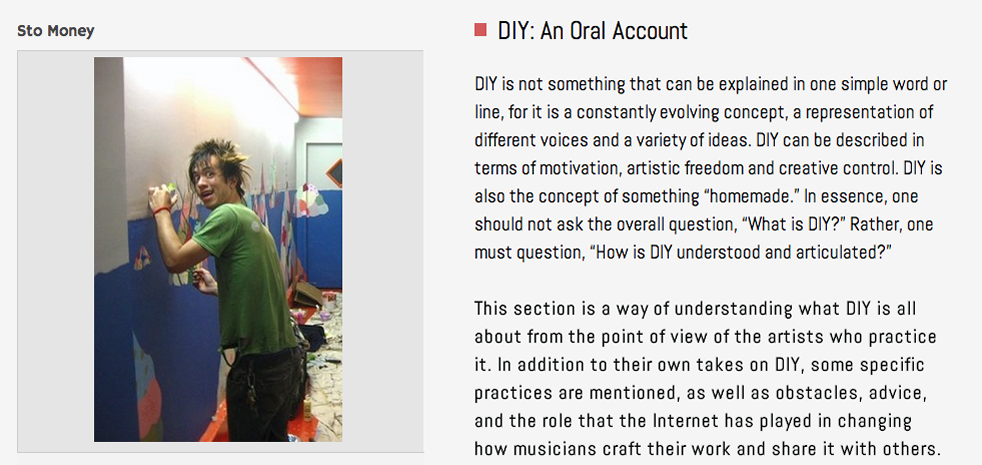I’m currently at work building an online exhibit based on do-it-yourself (DIY) cultures in the Pacific Northwest as represented in the materials of the Crocodile Cafe Collection. The collection, permanently housed at the University of Washington media library, consists of over 5,000 hours of live board recordings made between 2002 and 2007 at the Crocodile Cafe, the legendary music venue in downtown Seattle. Jim Anderson, the Croc’s (equally legendary) sound engineer, made the recordings with his own equipment and, upon the Cafe’s temporary closure in 2007, donated the collection to UW so that the public could visit the media library and explore this important chapter of Seattle’s cultural history.
DIY is an artistic ethos with strong roots in the Seattle/Tacoma area. Since the 80s, local musicians have taken it upon themselves to build a strong, vibrant community, one that traditionally eschews major-label representation and instead functions via grassroots promotion and tireless organizing. Hand-pulled gig posters, lo-fi bedroom recordings, and tape-sharing are a few examples of the ways in which DIY has come to thrive as an enduring movement. The Croc recordings represent a unique chapter in the local DIY story: Jim made them as both a document of the scene and also as an inexpensive option for the artists to release their own live performances (he never recorded without permission of the bands, and never profited from them). Nearly every local artist of note in the 2000s is represented in the collection.
This exhibit will tell the story of the Croc’s place in the history of DIY. To this end, local DIY is treated here as a culturally significant historical movement. The recordings therefore can be viewed as historical artifacts. The exhibit’s various narratives seek to intertwine these artifacts with the underlying philosophies of DIY and how they manifested themselves in the late nineties / early aughts Pacific Northwest music story.
I recently travelled to Seattle with Jentery to speak with Jim, John Vallier (the media librarian at UW), and Laurel Sercombe, lead archivist at UW’s Ethnomusicology Sound Archive. We discussed the potential for using media to illustrate the exhibit’s narratives, as well as ways that we might better tell the story of the Croc’s role in DIY culture. We learned that Jim donated the recordings with the stipulation that they only be fully accessible at the UW library itself. Thus, part of the exhibit will point people to the physical collection via the presentation of fair-use audio and video clips taken (with permission) from the collection. These clips will represent many of the artists who were integral to the vital DIY culture in the Pacific Northwest. We also discovered that Jim—an obvious archivist at heart—also has an extensive collection of various related media, such as weekly club schedules, set lists, and gig posters. Perhaps these artifacts will also be represented in the exhibit as well.
To construct the exhibit, I’m working with Scalar, a multimodal publishing platform currently in development by a team based at USC. Scalar allows the user to explore media and text in a highly interactive way—one can navigate easily through the exhibit while accessing media, and even change the settings to let the media tell the story. Having returned from Seattle with a clearer understanding of what we will be able to do with this exhibit, I’m looking forward to working through the narratives and finding the best way to integrate the wealth of media we have at our disposal.
Post by Shaun Macpherson, attached to the CrocCafe project, with the exhibits tag. Featured images for this post care of the Crocodile Cafe Exhibit.




Pingback: Maker Lab in the Humanities » University of Victoria » Making Mics()